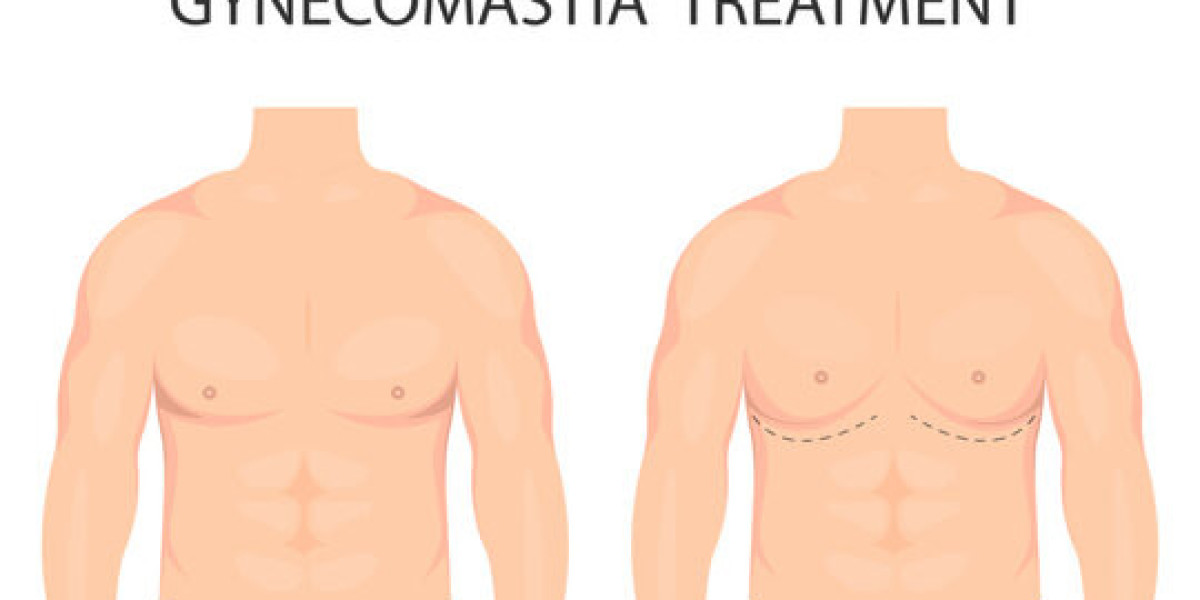Gynecomastia surgery involves removing excess glandular tissue and/or fat from the male chest to create a flatter, more masculine contour. The recovery timeline varies depending on the surgery’s complexity, the techniques used, your overall health, and how closely you follow post-op instructions. Understanding this timeline will help set realistic expectations and guide you on how to care for yourself during healing. If you're struggling with male breast enlargement, gynecomastia surgery in Islamabad offers a safe and effective solution to restore your confidence.
Immediately After Surgery (First 24 Hours)
Right after surgery, you will likely spend some time in a recovery room where medical staff monitor your vital signs as anesthesia wears off. It’s normal to experience some swelling, bruising, and mild discomfort or pain around the chest area.
You will be fitted with a compression garment or chest binder. This garment plays a critical role in reducing swelling, supporting the new chest shape, and helping the skin adhere smoothly to the underlying tissue. It is essential to wear this as instructed by your surgeon.
Pain medication and antibiotics will likely be prescribed to manage discomfort and prevent infection. Make sure to follow the dosage instructions carefully.
First Week (Days 1–7)
During the first week, expect swelling and bruising to peak, then slowly begin to subside. The chest may feel tight or numb, which is normal due to nerve disturbance during surgery.
Most patients can manage discomfort with prescribed painkillers and over-the-counter medications. Avoid strenuous activities or heavy lifting during this time. Walking around gently at home is encouraged to promote circulation.
Your surgeon will typically schedule a follow-up visit within this week to remove drains if used and check the surgical sites for signs of infection or complications. Keep the incision areas clean and dry as per instructions.
Sleep with your upper body elevated to minimize swelling. Avoid lying flat on your stomach or side to prevent pressure on the chest.
Weeks 2 to 3
Swelling and bruising will continue to diminish gradually. By the second week, many patients feel well enough to return to light activities and non-strenuous work, though heavy exercise or lifting should still be avoided.
The compression garment should still be worn during waking hours, but some surgeons allow removing it for short periods by this stage. Follow your surgeon’s specific advice.
Incisions will start healing visibly. Scars may look red or pink initially but will fade over time. Keep incision sites moisturized with recommended ointments and avoid exposing them to direct sunlight.
If you experience any unusual symptoms—excessive redness, increasing pain, discharge, or fever—contact your surgeon immediately as these may indicate infection or other complications.
Weeks 4 to 6
By this stage, most of the swelling has resolved, and your chest shape will be more apparent. Many patients can gradually resume moderate exercise such as walking, swimming, or light gym workouts. However, avoid heavy lifting, push-ups, or intense chest exercises until cleared by your surgeon.
Scar management becomes more important during this phase. Use silicone sheets or gels if recommended to improve scar texture and appearance.
Your surgeon may schedule a follow-up appointment during this period to assess healing progress, remove any remaining sutures if needed, and answer any questions you have.
Months 2 to 3
At this point, your chest contour should be largely settled, and residual swelling should be minimal or gone. You can usually return to most normal activities, including regular exercise and sports, provided your surgeon approves.
Scars will continue to fade and soften, although complete maturation of scars may take up to a year or more. Protect scars from sun exposure to prevent darkening.
Some numbness or altered sensation in the chest area may persist but often improves gradually over time.
Long-Term Recovery (3 Months and Beyond)
Full healing from gynecomastia surgery can take up to 6 months to a year, depending on individual factors such as skin elasticity, surgical technique, and how well you follow aftercare guidelines.
By this stage, most patients enjoy a smooth, firm chest contour with minimal scarring. Any residual swelling or firmness typically resolves.
It is important to maintain a stable weight and healthy lifestyle to preserve your results. Significant weight gain can lead to the return of fatty tissue in the chest area.
Regular skin care and sun protection for the scar area are essential to maintain aesthetic appearance.
Tips for a Smooth Recovery in Islamabad’s Climate
Stay hydrated and maintain good nutrition: A balanced diet rich in proteins, vitamins, and minerals supports tissue repair.
Avoid direct sun exposure to scars: Islamabad’s sunny weather means you should cover scars or use sunblock once the incisions have healed enough.
Rest adequately and avoid stress: Proper rest promotes healing. Try to avoid stressful situations during recovery.
Follow medication instructions precisely: Complete the full course of antibiotics if prescribed to prevent infection.
Avoid smoking and alcohol: Both can impair healing and increase risk of complications.
Keep follow-up appointments: Regular check-ups allow early detection of any issues and reassurance.
Wear your compression garment diligently: Even if it feels uncomfortable, it plays a key role in shaping and healing.
When to Contact Your Surgeon
While some discomfort and swelling are expected, contact your surgeon promptly if you experience:
Severe pain not relieved by medication
Significant redness or warmth around the incision
Pus or foul-smelling discharge
Sudden swelling or bruising after initial improvement
Fever above 101°F (38.3°C)
Difficulty breathing or chest pain (emergency)
Summary
Recovering from gynecomastia surgery in Islamabad generally follows a stepwise timeline:
First week: Rest, manage pain and swelling, wear compression garment
Weeks 2-3: Reduced swelling, return to light activity, wound healing
Weeks 4-6: More normal activities, scar care, gradual exercise resumption
Months 2-3: Near full recovery, scar maturation continues
Beyond 3 months: Final results visible, maintenance of healthy lifestyle
Patience and adherence to your surgeon’s aftercare instructions are key to achieving the best possible outcome.












